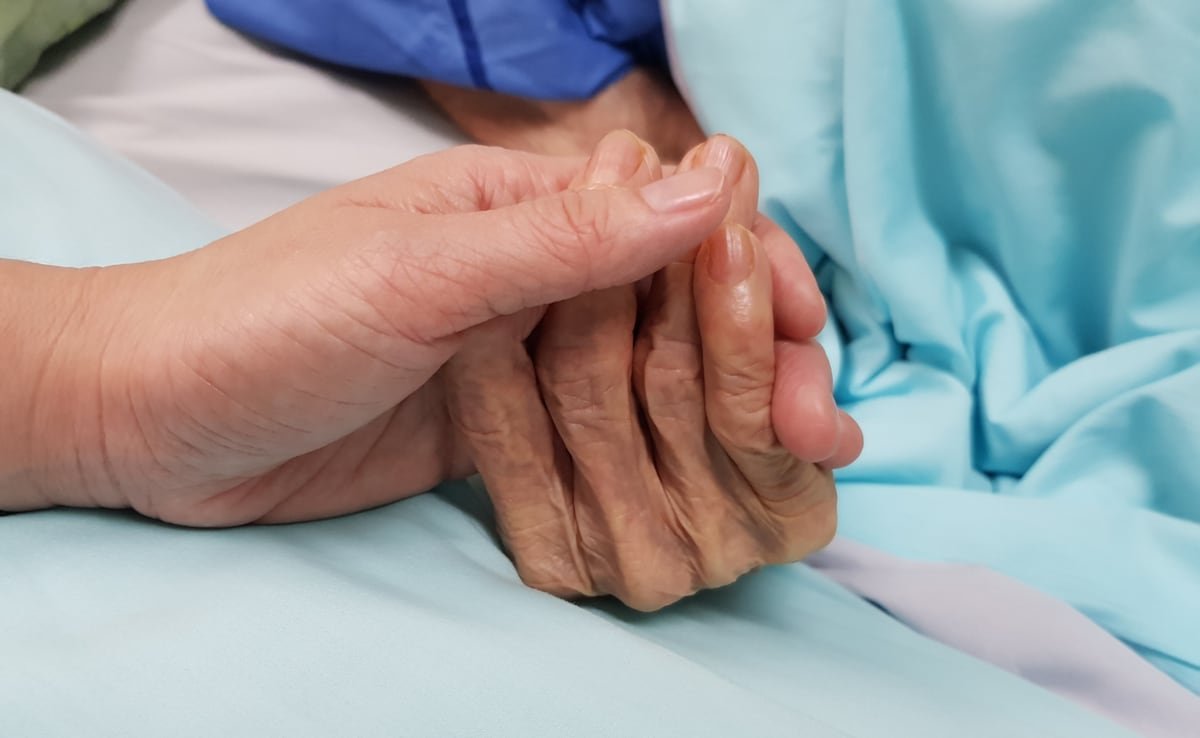More and more countries are legalising voluntary assisted dying. This lets a doctor, or sometimes a nurse practitioner, give life-ending medication to an eligible person who requests it.
As of 2023, 282 million people lived in regions where voluntary assisted dying is legal. Jurisdictions such as the Netherlands, Belgium and Oregon have had these laws in place for decades. Other countries, including Canada, Spain, New Zealand and Australia, have passed reforms more recently.
The trend towards legalisation is continuing. Several countries are actively considering this issue, with strong public support. In November, the United Kingdom’s House of Commons supported an assisted dying bill for the first time, after years of failed attempts.
Debates about voluntary assisted dying are often highly polarised. Understanding the factors driving assisted dying is essential for evidence-based debates and for improving care for people with serious conditions.
In a recent study, we examined data from people accessing voluntary assisted dying in 20 jurisdictions around the world. In particular we looked at what diseases they had.
What Are The Rules?
The legal rules for voluntary assisted dying vary by country (and what it’s called differs too).
In countries including Australia and New Zealand, voluntary assisted dying is available only to people who are terminally ill. For example, in Australia a person must have an advanced, progressive condition that is generally expected to cause death within a certain time frame (6 to 12 months, depending on the state).
Countries such as the Netherlands, Spain and Canada also allow access for eligible people suffering from non-terminal conditions. Canada allows voluntary assisted dying for those who are suffering intolerably from “grievous and irremediable” conditions. While a person’s condition doesn’t have to be terminal, extra safeguards apply when a person’s natural death is not “reasonably foreseeable”.
That said, voluntary assisted dying for non-terminal conditions remains rare. In 2023, 95.9% of people who accessed voluntary assisted dying in Canada had a reasonably foreseeable natural death.
Who can administer the medication also varies. In the United States and Switzerland, people must take the medication themselves, usually by swallowing a liquid (known as “self-administration”).
In Québec, Canada, physicians or nurse practitioners must administer it, which usually happens intravenously. In several jurisdictions, including Australia, both self-administration and practitioner administration are available.
Our Research
With an international team of researchers, we looked at the role disease plays in voluntary assisted dying. We analysed publicly available data from 20 jurisdictions in eight countries between 1999 and 2023.
Overall, most people who accessed voluntary assisted dying had cancer (66.5% of cases). Neurological diseases were the second most common (8.1%), followed by heart (6.8%) and lung (4.9%) conditions.
We also looked at what proportion of people with each disease accessed voluntary assisted dying versus dying by other means. Even though voluntary assisted dying rates and eligibility criteria vary by location, the rates for specific diseases were surprisingly consistent across regions and time periods.
For example, people with amyotrophic lateral sclerosis (ALS) – a rare, progressive, fatal disease that damages the brain and spinal cord – had the highest rate of voluntary assisted dying. People with ALS accessed voluntary assisted dying at a rate nearly seven times higher than people with cancer.
Meanwhile, cancer patients were four times more likely to access voluntary assisted dying than those with lung disease, and ten times more likely than those with heart disease.
What Does This Tell Us?
Cancer and ALS, which appear to be the main reasons people access voluntary assisted dying, have very little in common. But both often cause a more rapid decline in health and a greater perceived loss of dignity than other conditions.
Our findings align with other research that shows people usually request voluntary assisted dying because they have lost autonomy, dignity, or the ability to do things that are meaningful to them.
Critics of voluntary assisted dying worry people might be pressured into choosing this option. One of the concerns is that people will opt for assisted dying because of a lack of palliative care. This refers to specialised care and treatment that helps people with serious life-limiting conditions live comfortably and fully.
Interestingly, while people with lung or heart conditions use palliative care less than those with cancer, our study found they are less likely to access voluntary assisted dying. If voluntary assisted dying was driven by poor access to services, we’d expect higher rates for heart and lung disease.
Similarly, recent data from Canada and Australia show most people who request voluntary assisted dying receive palliative care.
Where To From Here?
Our study doesn’t rule out that a range of factors, including poor access to services, may influence some cases. But it helps clarify common misconceptions about what drives voluntary assisted dying.
Further research should look at why cancer and ALS make up the largest proportion of cases. If voluntary assisted dying is primarily about swift decline and loss of dignity, we must focus on new ways to support patients facing these challenges.
And while voluntary assisted dying can promote autonomy and compassion, allowing people who are suffering to choose when and how they die, our findings don’t diminish the importance of protecting vulnerable people.
Robust safeguards to ensure decisions are voluntary and only eligible people have access, as well as high-quality palliative and supportive care, are essential in any voluntary assisted dying framework.
This article was developed with input from Brandon Heidinger, a medical student at the University of Western Ontario.
(Authors: Eliana Close, Senior Research Fellow, Australian Centre for Health Law Research, Queensland University of Technology and James Downar, Head and Professor, Division of Palliative Care, Department of Medicine, L’Université d’Ottawa/University of Ottawa)
(Disclosure Statement: Eliana Close has received funding from the Commonwealth government for research and training about the law, policy and practice relating to end-of-life care (Australian Department of Health, End of Life Law for Clinicians). In relation to voluntary assisted dying, she is employed on an Australian Research Council Future Fellowship project funded by the Australian government (Enhancing End-of-Life Decision-Making: Optimal Regulation of Voluntary Assisted Dying, Chief Investigator, Professor Ben White). She has also been employed on projects funded by the Victorian, Western Australian, and Queensland governments to design and provide the legislatively mandated training for health practitioners involved in voluntary assisted dying in those states. James Downar has received consulting fees from Joule, Inc. to develop educational material relevant to Medical Assistance in Dying. He is a former unpaid chair of the Clinical Advisory Council for Dying with Dignity Canada, a group advocating for the legalization of Medical Assistance in Dying in Canada)
This article is republished from The Conversation under a Creative Commons license. Read the original article.













Leave a Reply